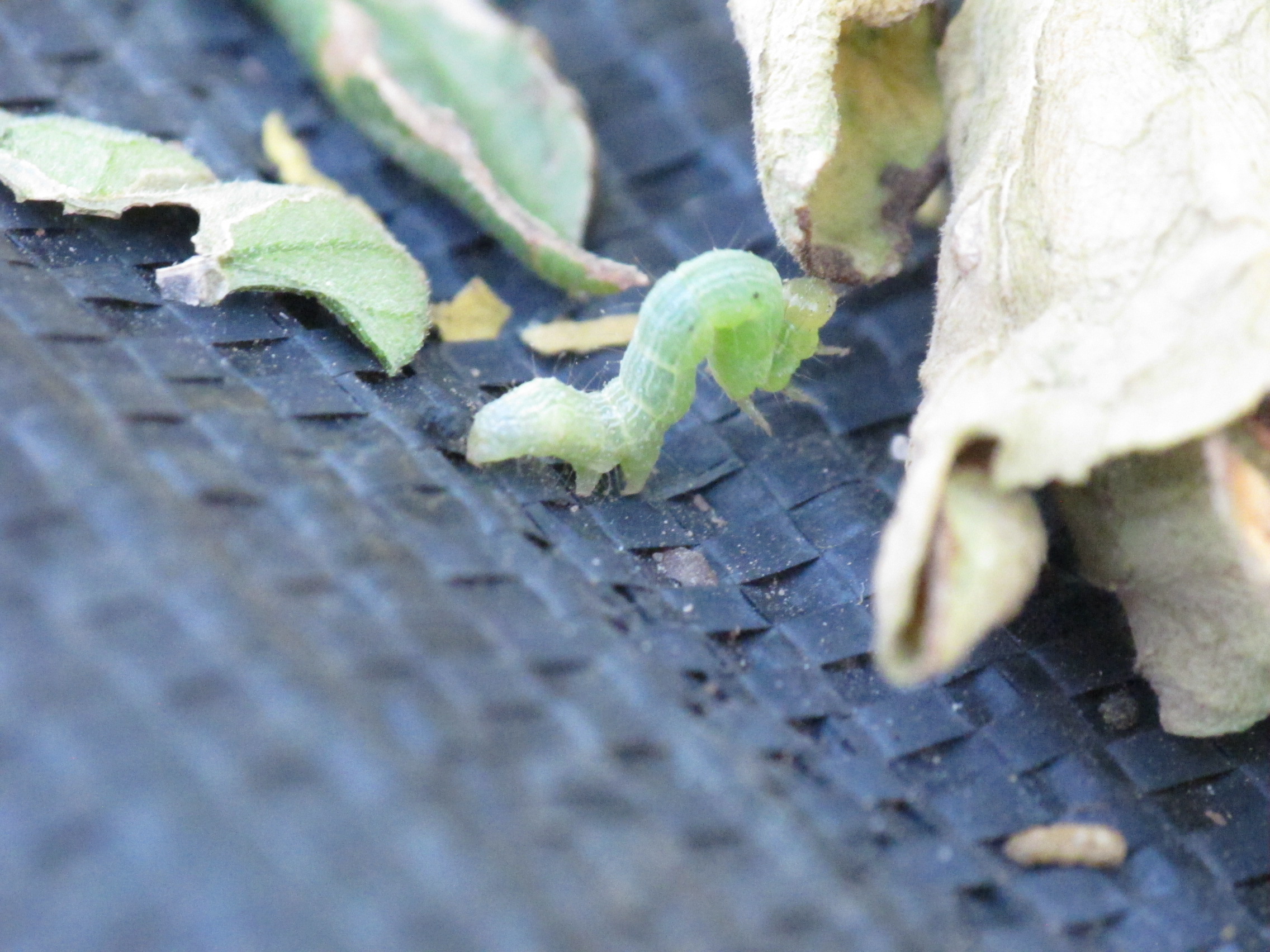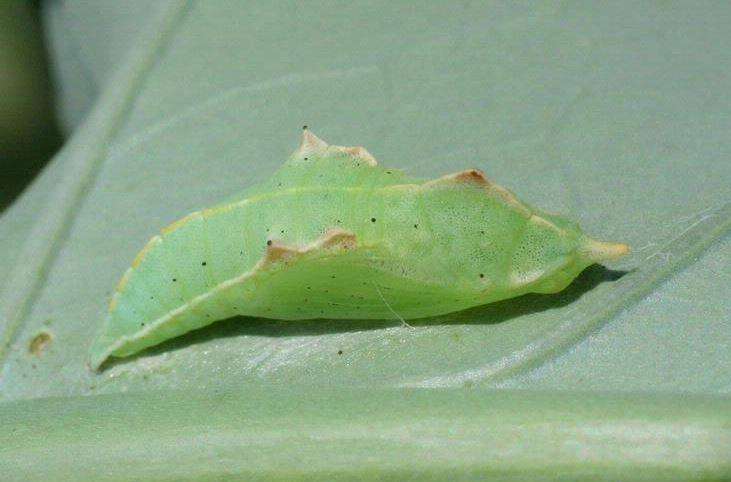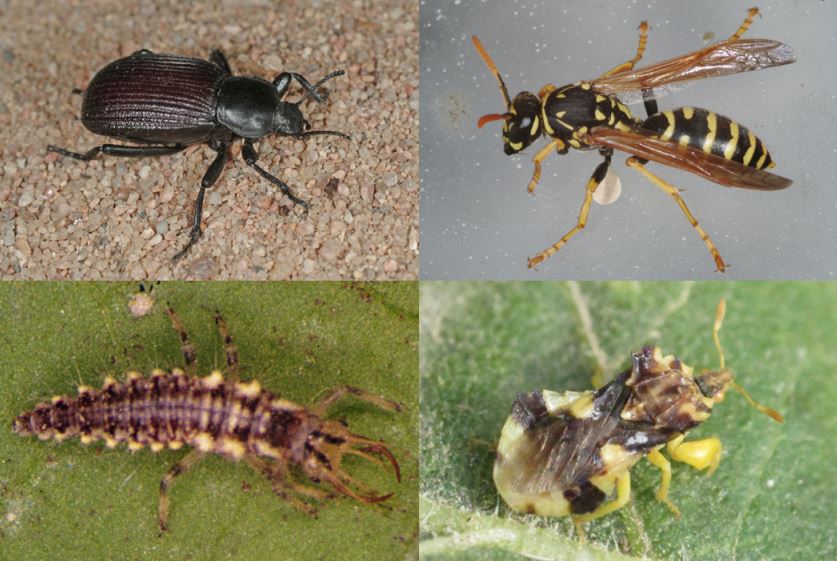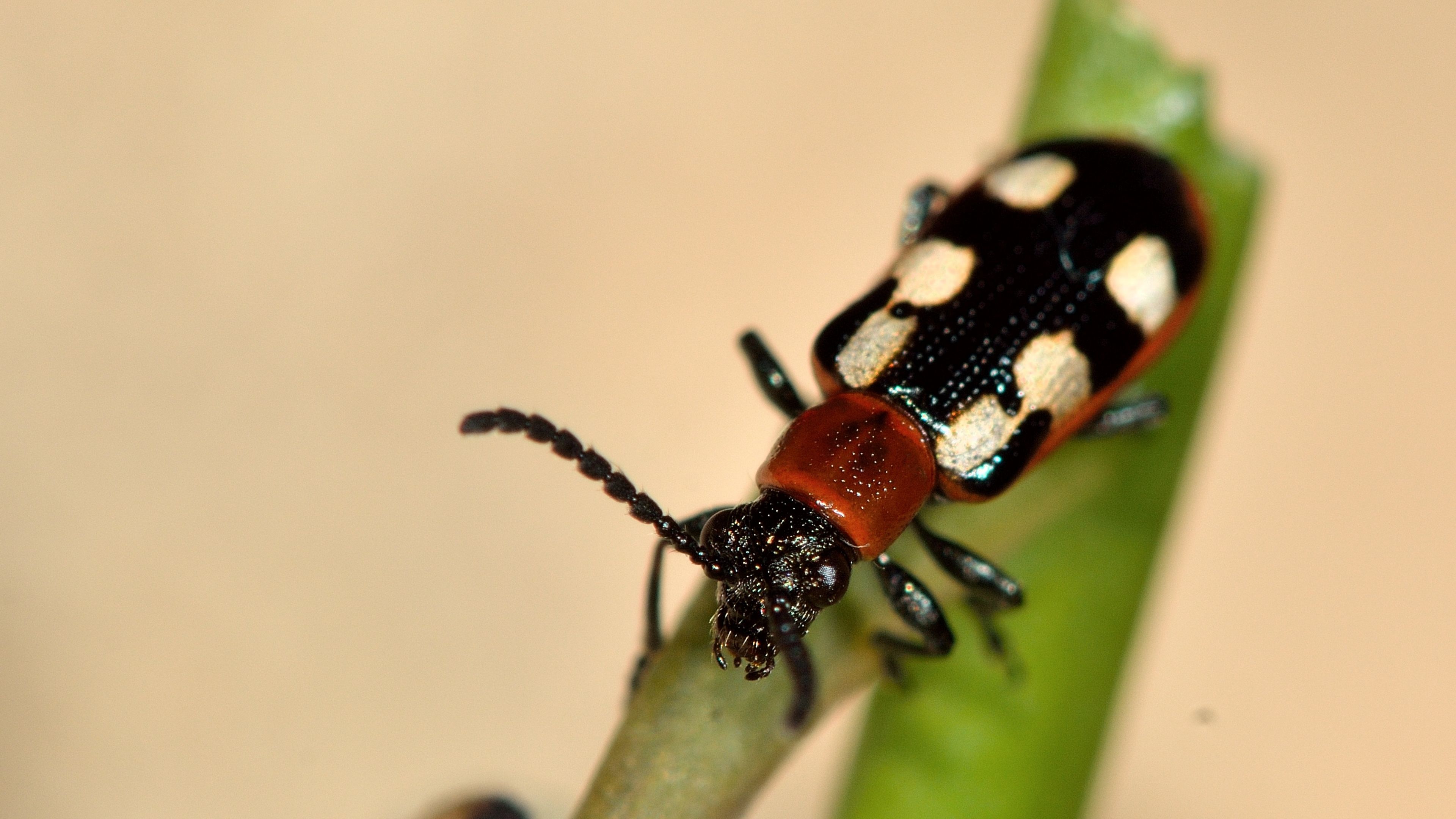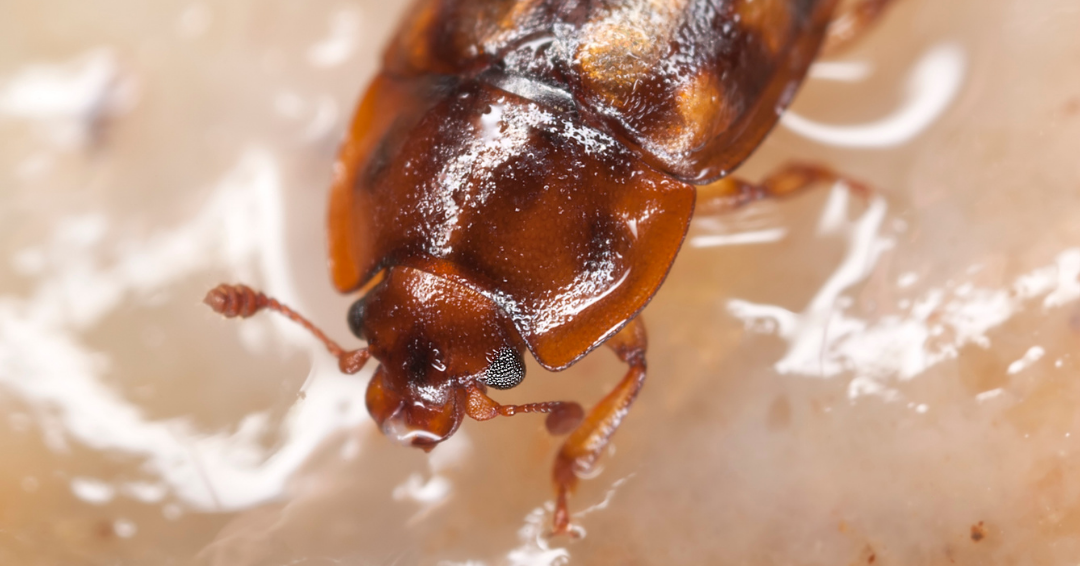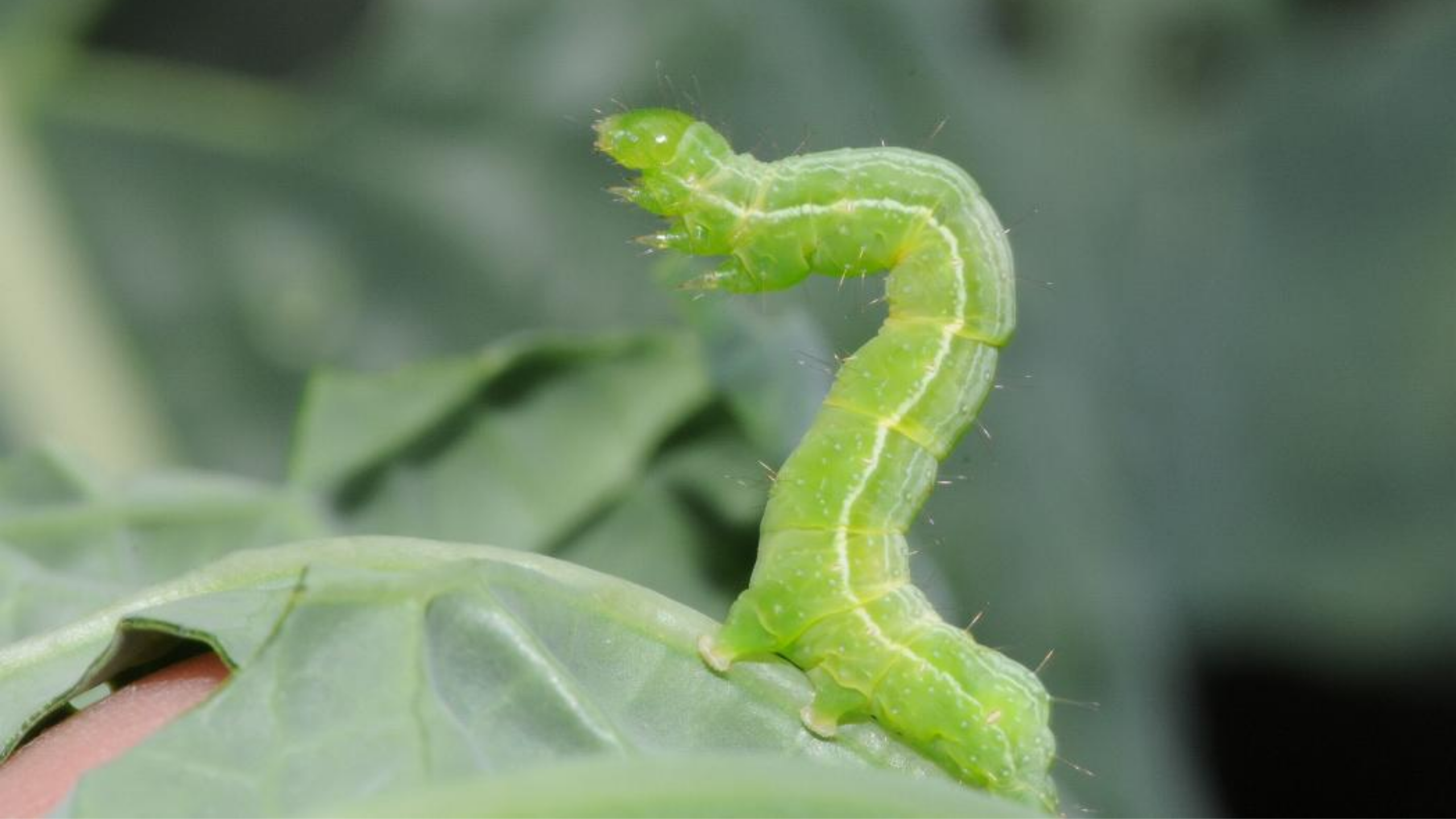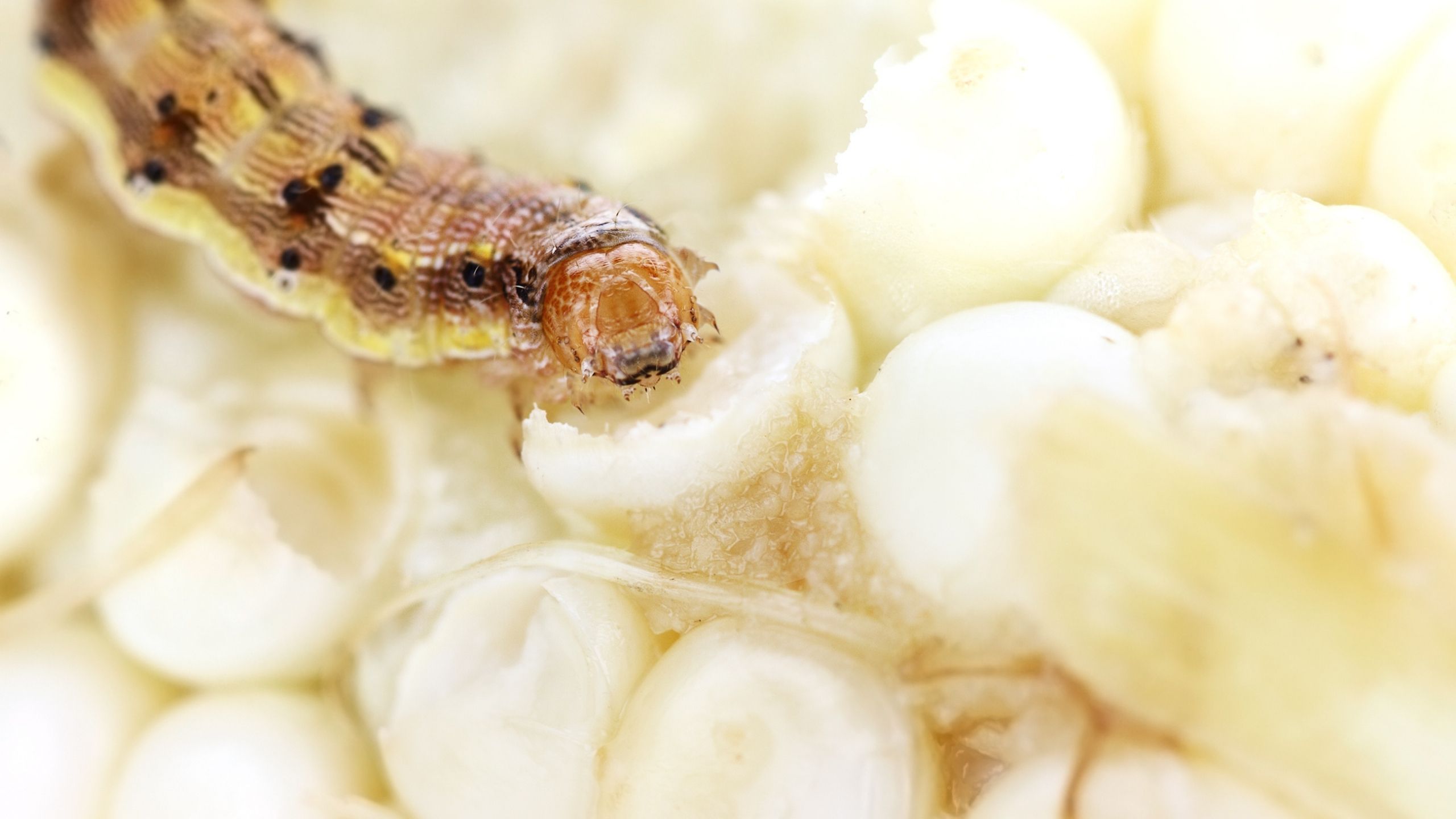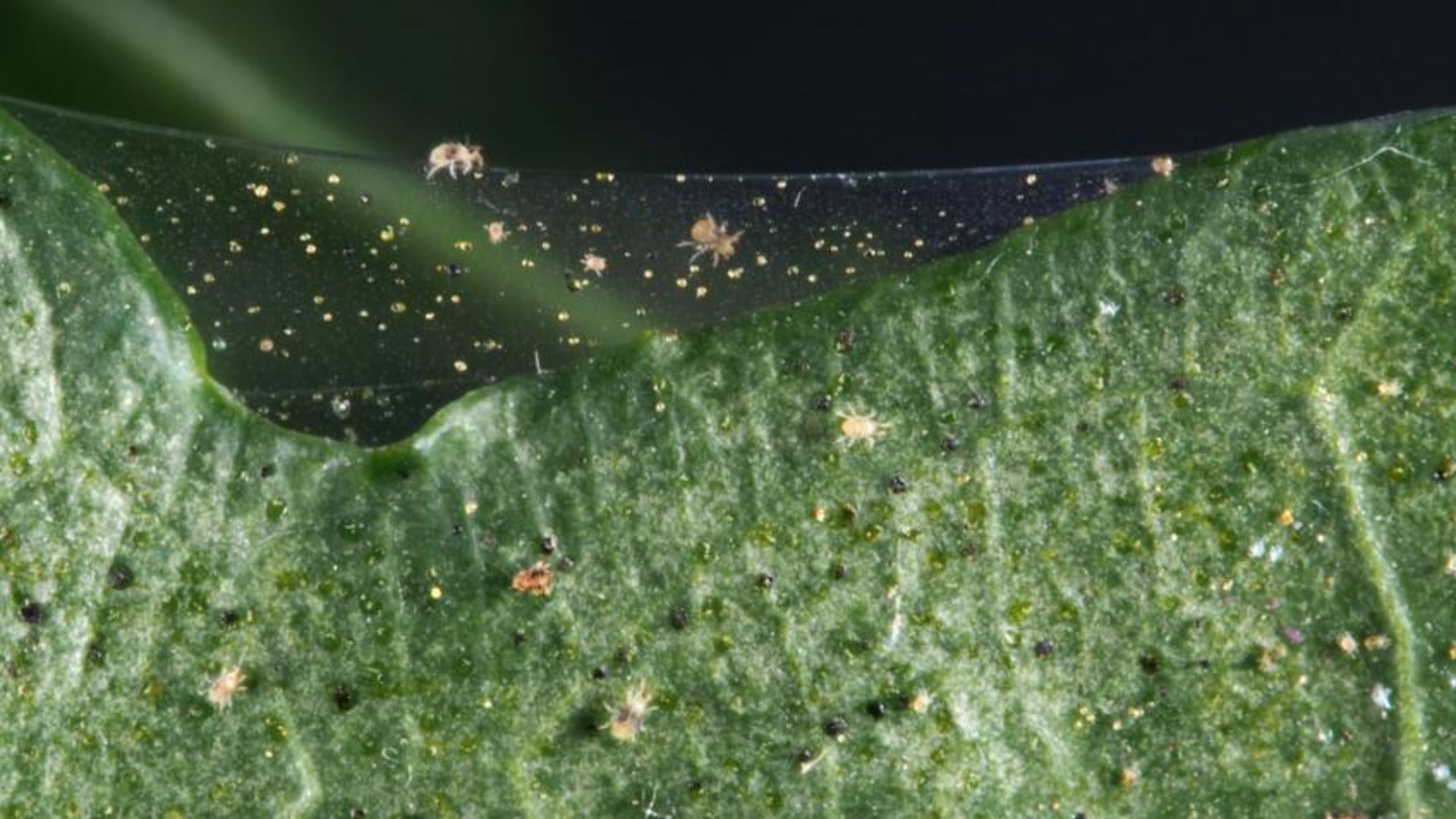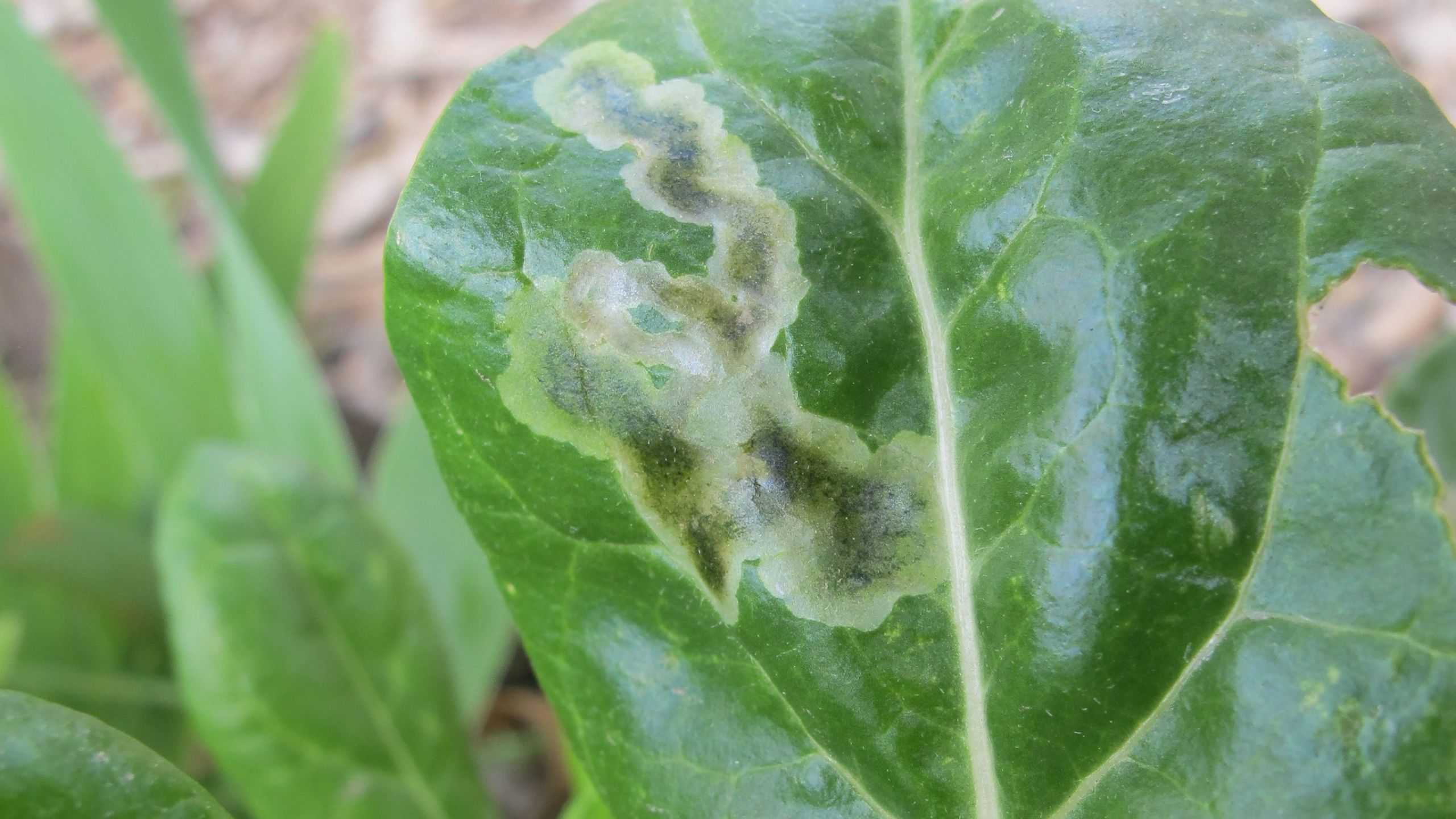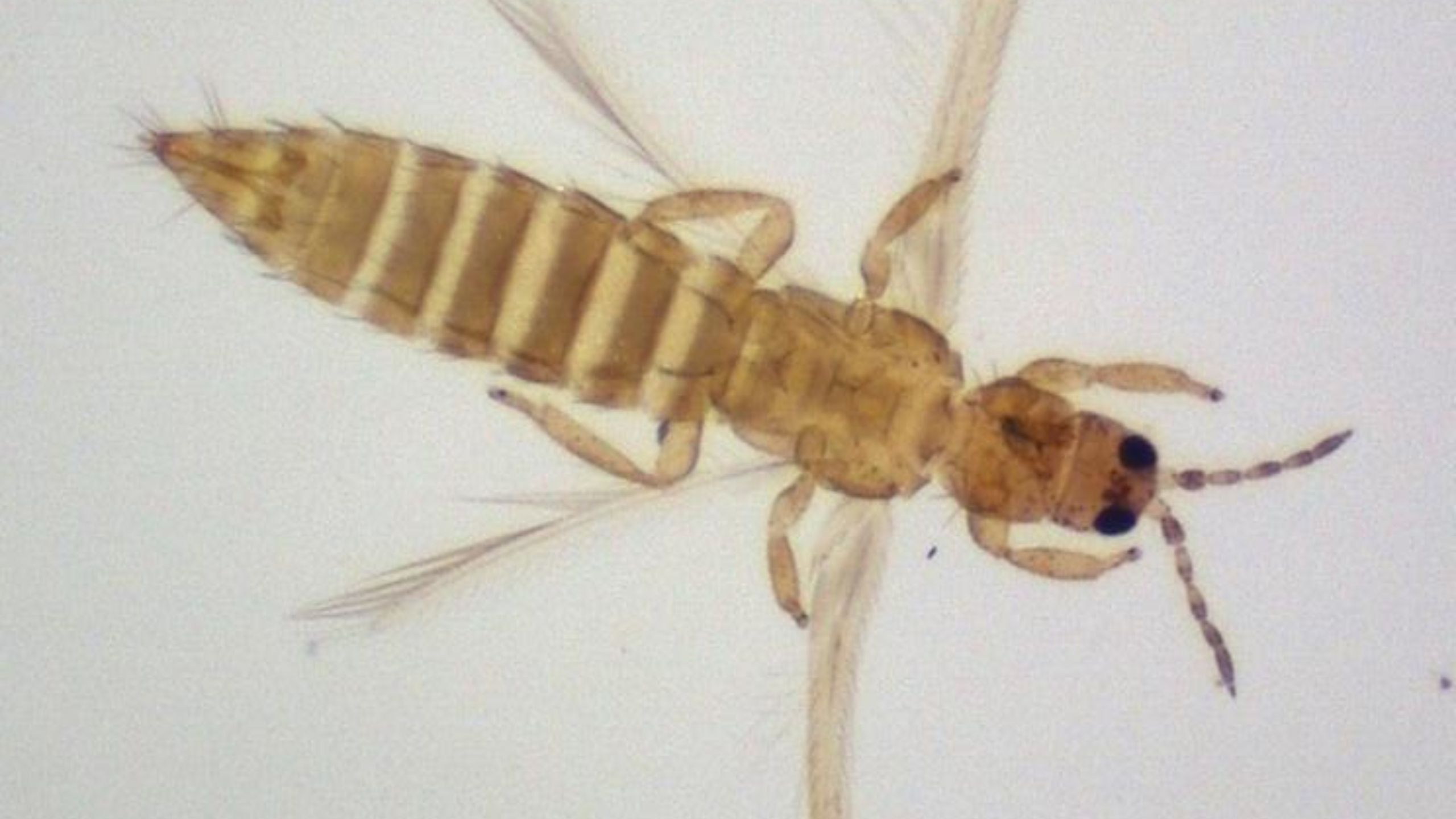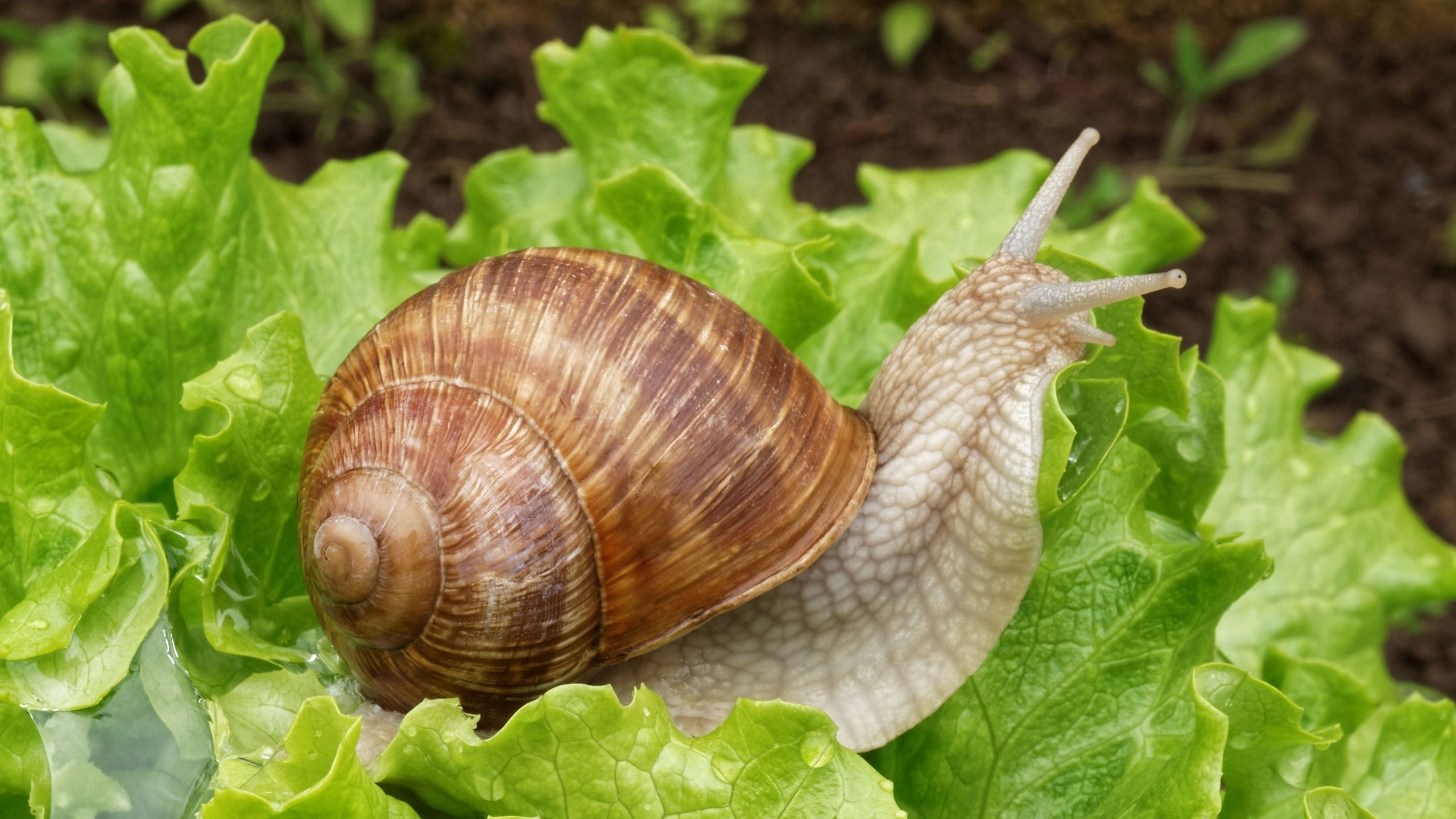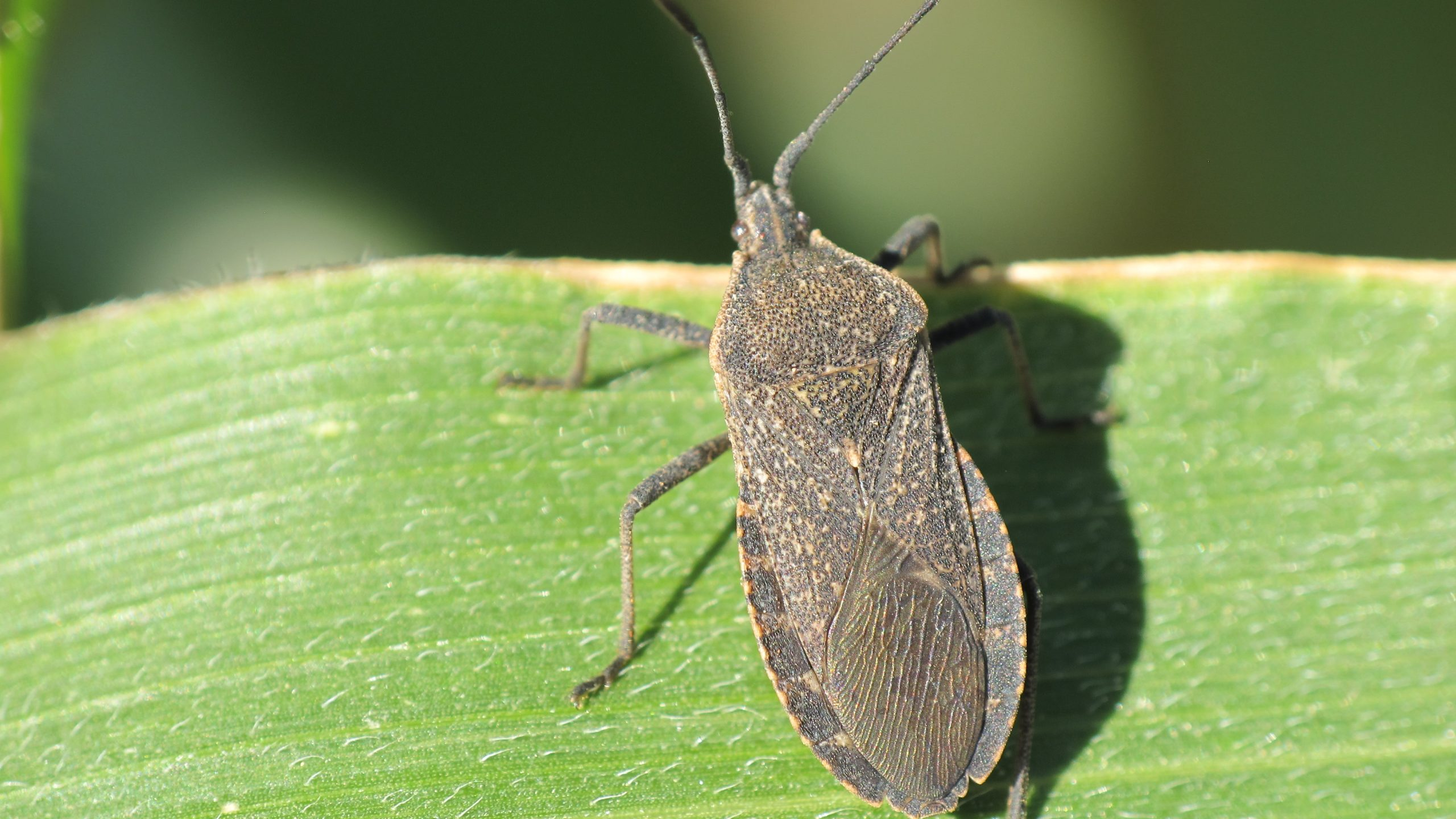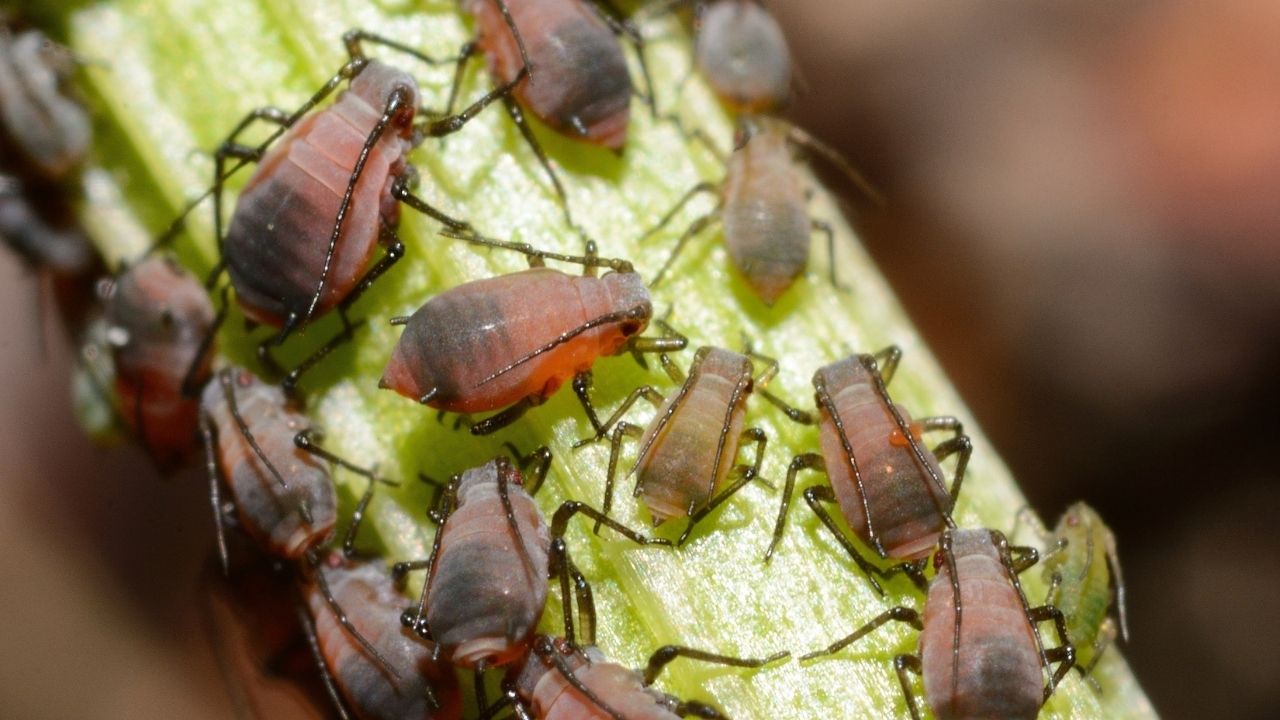Caterpillar Pests of Brassica Vegetables
October 2016
Cami Cannon & Bonnie Bunn, Vegetable IPM Associates • Diane Alston, Extension Entomologist (No longer at USU) • Marion Murray, Extension IPM Specialist
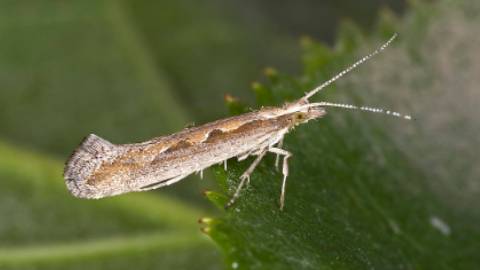
Image courtesy of David Cappaert, Michigan State University, Bugwood.org.
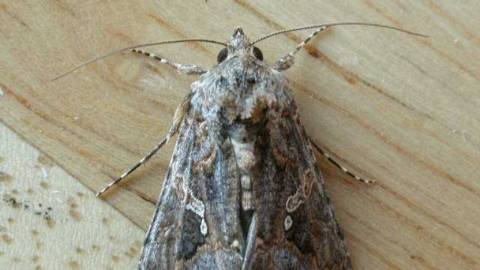
Image courtesy of Keith Naylor, Bugwood.org.
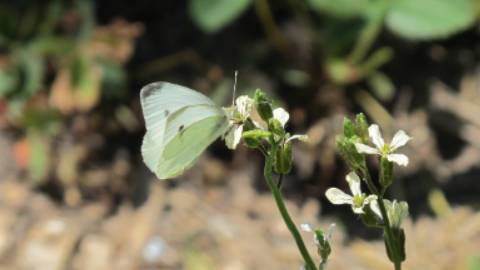

Image courtesy of uspest.org.


Image courtesy of Phil Sloderbeck, Kansas State University, Bugwood.org.
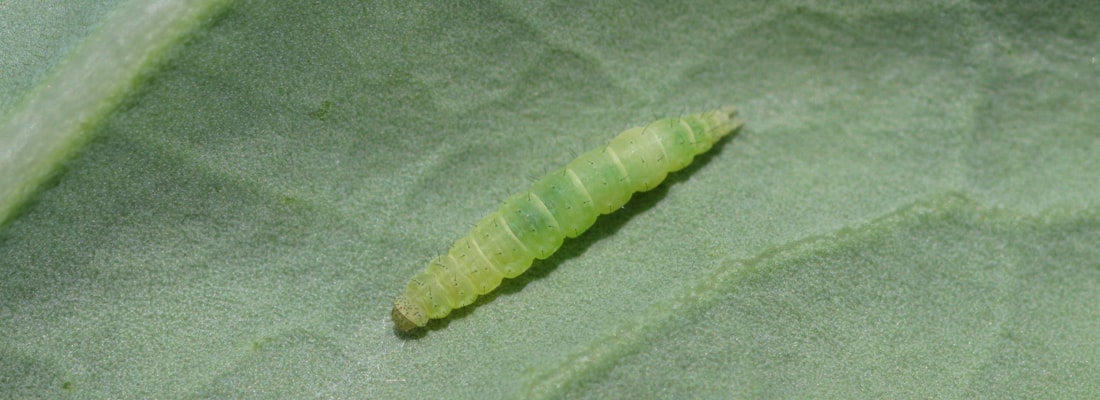
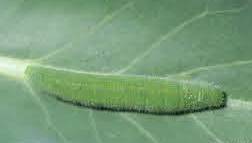
Image courtesy of Russ Ottens, University of Georgia, Bugwood.org.

Image courtesy of Russ Ottens, University of Georgia, Bugwood.org.
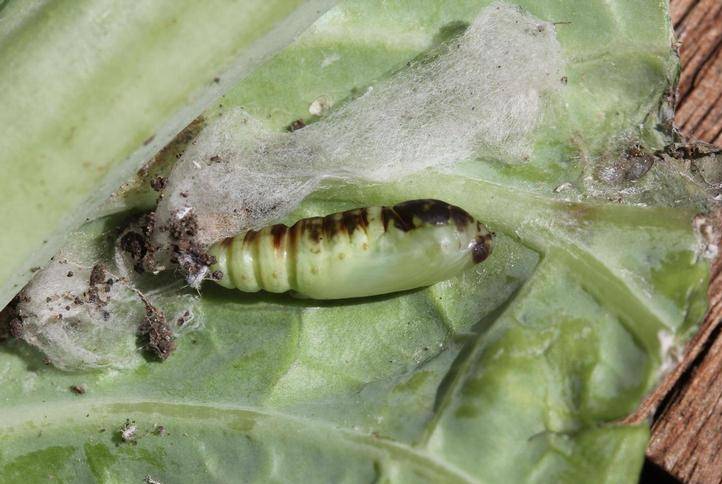
Image courtesy of Whitney Cranshaw, Colorado State University, Bugwood.org
Image courtesy of Russ Ottens, University of Georgia, Bugwood.org.
Image courtesy of Ground beetle & Paper wasp: Joseph Berger, Bugwood.org; Lacewing larva: Whitney Cranshaw, Colorado
State University, Bugwood.org.

Image courtesy of Whitney Cranshaw, Colorado State University, Bugwood.org.

Image courtesy of warwick.ac.k/fac/sci/lifesci/css/research/pests/plutella.
Quick Facts
- In Utah, there are three main caterpillar pests of cabbage and mustard family plants: imported cabbageworm, cabbage looper, and diamondback moth. The injury they cause is similar.
- Diamondback moth is the primary caterpillar pest in commercial brassica crops; cabbage looper and imported cabbageworm are common in home gardens.
- The cabbage looper has the broadest host range of the three caterpillars; in addition to cabbages and mustards, it attacks many vegetables and weeds.
- Biological insecticides, such as Bt and spinosad, are highly effective against cabbage caterpillars.
- Cultural and mechanical tactics, such as handpicking caterpillars and row covers can be effective alternative management options.
Brassica crops are hosts to many different insect pests,including several caterpillar species. The three most common in Utah are Diamondback Moth (Plutella xylostella), Cabbage Looper (Trichoplusia ni), Imported Cabbageworm (Pieris rapae).
Hosts
The diamondback moth attacks plants exclusively in the Brassicaceae family including broccoli, Brussels sprouts, cabbage, cauliflower, Chinese cabbage, collards, kale, kohlrabi, mustard, radish, rutabaga, turnip, watercress, and many related weeds.
The cabbage looper causes damage to plants in the Brassicaceae family, and attacks other vegetable hosts including beet, celery, cucumber, lettuce, lima bean, parsnip, pea, pepper, potato, snap bean, spinach, squash, sweet potato, and tomato. Weed hosts include lambsquarters (Chenopodium album), wild lettuce (Lactuca spp.), dandelion (Taraxacum officinale), and curly dock (Rumex crispus).
The imported cabbageworm attacks plants exclusively in the Brassicaceae family including many related weeds.
Description and Life History
| Characteristics | Diamondback Moth | Cabbage Looper | Imported Cabbageworm |
|---|---|---|---|
| Utah status | migratory in the north and resident in south |
migratory (some resident) | resident |
| overwintering stage and site | adult, in trash and debris in and around crop fields |
pupa, see pupation site below | pupa, see pupation site below |
| # generations per year | 4 to 6 | 1 to 3 | 3 to 4 |
| Adult | |||
| type | moth | moth | butterfly |
| activity period | dusk and dawn (crepuscular) | mostly night (seminocturnal) | day |
| color | grayish brown | grayish brown | white |
| wing marks | white/cream diamonds | silver "8" | females: 2 dark spots males: 1 dark spot |
| wingspan | 0.75 inches (18 mm) | 1.5 inches (38 mm) | 2 inches (50mm) |
| Egg | |||
| shape | round | dome | rocket/bullet |
| color | yellow | yellowish-white | yellow |
| size | 0.02 inch (0.4 mm) wide | 0.02 inch (0.4 mm) high | 0.04 inch (1.0 mm) long |
| distribution | laid singly and in clusters | laid singly and in clusters | laid singly |
| Larva | |||
| color | greenish gray | pale to dark green | green |
| texture | smooth, few sparse hairs | smooth, few sparse hairs | fuzzy/velvety due to dense short hairs |
| marks | no stripes | thin, white or light yellow stripes | thin, yellow stripe |
| shape | tapered at both ends | tapered at head | blunt ends |
| size | 0.5 inch (12 mm) | 1.5 inches (38 mm) | 1.2 inches (31 mm) |
| behavior | wiggles (vigorously) | arches body into a loop | sluggish |
| # of instars (moths) | 4 | 5 | 5 |
| Pupa | |||
| type | oose mesh cocoon | fuzzy cocoon | naked chrysalis |
| size | 0.3 inch (8 mm) | 1.2 inches (30 mm) | 0.75 inch (19 mm) |
| pupation site | on leaves | on leaves, plant debris, and soil | on leaves, and occasionally on debris |
Injury
The caterpillars (larvae) chew holes in leaves (Fig. 4), and may occasionally cause serious defoliation. Initially, feeding is concentrated on outer leaves, but as the caterpillars mature, their feeding intensifies, and they often move into the developing heads, creating tunnels. Contamination of leaves and heads with bodies (larvae and pupae) and frass (fecal material) lowers produce quality.
Monitoring
- Pheromone traps can be used to monitor adult populations of the diamondback moth and cabbage looper. Traps indicate when adults have arrived in an area and give an indication of their relative numbers. Experience with pheromone trapping for diamondback moth in northern Utah revealed that moth numbers can be very high in areas with commercial vegetable operations (Fig. 16). Place traps along the edge and just above the crop canopy. Traps and lures can be purchased online; see below for a list of retailers.
- Scout plantings for eggs and larvae on the undersides of leaves, especially on the innermost leaves. Feeding damage and excrement are also signs of an infestation. Examine at least 10% of the crop, checking random interior and edge areas. Also look for white butterflies (adults of imported cabbageworm) flying during the day among plants.
Management
Cultural Control
- Interplant. When brassica crops are inter-planted with unrelated plants, larval populations tend to be lower, and larval parasitism and predation by beneficial wasps increase. Predatory and parasitic wasps are attracted to the varied resources provided by a diversity of plants, including nectar and pollen in flowers, and diverse insect prey
- Start with clean transplants. In some regions of the country, brassica caterpillar populations have become resistant to certain insecticides. Inspect transplants carefully to ensure they are free of caterpillar eggs and larvae.
- Plant early or use early maturing varieties. Mature plants can tolerate feeding damage better than young seedlings.
- Remove plant debris at the end of the growing season to eliminate overwintering sites.
- Plant tolerant varieties. Mustard, turnip, and kohlrabi are among the more tolerant brassicas to the diamondback moth. Glossy green brassica varieties that lack the normal waxy, grayish-green bloom, are somewhat resistant because larvae spend more time searching, and less time feeding, on the glossy leaves. These varieties, however, tend to attract more cabbage flea beetles.
Studies in Wisconsin showed that cabbage looper adults are less likely to lay eggs on Chinese cabbage, mustard, rutabaga, and turnips than on headed cabbage, Brussels sprouts, and collards (Radcliffe and Chapman 1966).
Imported cabbageworm adults do not prefer Chinese cabbage, mustard, rutabaga, and turnip as well as kale. As with the diamondback moth, plants with dark green, glossy leaves are more resistant to imported cabbageworm.
Mechanical Control
- Use row covers to prevent oviposition (egg-laying) by adults. Place row covers over plants, or over metal hoops for support, just after planting or transplanting. Ensure that the edges of the row cover are securely buried in the soil along the crop row.
- Hand-pick and destroy larvae.
Biological Control
Natural enemies can provide effective control of the diamondback moth. Some parasitoid wasps include the ichneumonids Diadegma insularis and Diadromus subtilicornis, the braconid Microplitis plutellae, and Trichogramma pretiosum which attack eggs. Generalist insect predators such as ground beetles, true bugs, syrphid fly larvae, lacewing larvae, paper wasps, and spiders also play a role in reducing diamondback moth numbers (Fig. 14).
Important cabbage looper parasitoid wasps include the egg parasites Trichogramma pretiosum and Copidosoma truncatellum, and the larval parasites Hyposoter exiguaeichneumonid and Microplitis brassicae braconid. The endoparasitic tachinid fly Voria ruralis, is another important natural enemy.
Parasitoids of the imported cabbageworm include the braconid wasps Cotesia glomerata, a gregarious wasp (Fig. 15), Cotesia rubecula, a solitary wasp, and Apanteles glomeratus which attacks early instars. Trichogramma spp., are egg parasitoids and Pteromalus puparum is a pupal parasitoid. General predators such as shield bugs, ambush bugs (Fig. 14), and vespid wasps also attack them, as do man birds.
Chemical Control
Insecticide resistance has become a challenge to management of brassica caterpillar pests, especially diamondback moth. Rotating insecticides with different modes of action can help slow the development of resistance. In general, insecticides are more effective against small (young) rather than large (older) caterpillars. Early timing of sprays will also help decrease contamination of plant heads with insect bodies and frass.
Once caterpillars penetrate a cabbage head, they are difficult to reach with treatments. A general treatment threshold for head-forming plants is very low: treat plants when 1 larva has been found in 25 to 50 plants (or when 10% of plants have at least 1 larva). Non-head forming plants can tolerate a higher population.
Bacillus thuringiensis var. kurstaki (Bt) is a microbial insecticide that targets caterpillars. It is a stomach poison that must be ingested by the caterpillar, and works best when caterpillars are young and actively feeding. It has a short residual and is non-toxic to mammals and beneficial parasitoids and predators. Most Bt formulations meet organic certification standards.
Examples of home use insecticides registered in Utah that are effective for control of caterpillar pests on brassicas.
| Active Ingredient | Brand Name | MoA* | Residual (days) | Diamondback Moth | Cabbage Looper | Imported Cabbageworm |
|---|---|---|---|---|---|---|
| malathion | Bonide Malathion | 1B | 7 | X | ||
| cyfluthrin | BioAdvance Vegetable & Garden Insect Spray | 3 | 7-14 | X | X | X |
| lamba-cyhalothrin | Bonide Beetle Killer; Bonide Caterpillar Killer | 3 | 7-14 | X | X | X |
| permethrin | BioAdvance Complete Insect Dust; Eight Vegetable, Fruit & Flower | 3 | 7-14 | X | X | X |
| pyrethrins | Natria Fruit & Vegetable; Bonide Pyrethrin Garden Insect Spray; Worry Free Insecticide & Miticide | 3 | 3-4 | X | X | X |
| pyrethrins + canola oil |
Monterey Take Down Garden Spray | 3 + physical | 7 | X | ||
| acetamiprid | Ortho Flower, Fruit, & Vegetable | 4A | 7 | X | X | |
| spinosad | Captain Jack's Deadbug BrewO | 5 | 7 | X | X | X |
| Bacillus thuringiensis |
Monterey B.t.O; Bonide Thuricide | 11A | 5 | X | X | |
| oils: rosemary, clove, cottonseed, mineral |
Monterey All Natural 3 in 1 Garden Insect SprayO; Monterey All Natural Mite & Insect ControlO; Tri Trek | 0 | X | X | X | |
| neem oil | NatriaO; MontereyO | 0 | X | X | X |
*Insecticide mode-of-action (MOA) classification number based on guidelines from the Insecticide Resistance Action Committee.
Rotate among insecticide classes to reduce the development of resistance; 1B = organophosphate, 3 = pyrethroids and pyrethrins,
4A = neonicotinoid, 5 = spinosyns, and 11A = bacterial microbe.
OOrganically certified insecticide products.
Note: All brand names are registered trademarks. Examples of brands may not be all-inclusive, but are meant to provide examples of
insecticides registered on vegetables in Utah. The availability of insecticides and active ingredients in brands can change. Always check
the label for active ingredient(s), registered uses, application and safety information, and protection and pre-harvest intervals.
References and Further Reading
- Radcliffe E. B., Chapman R. K. 1966. Varietal Resistance to Insect Attack in Various Cruciferous Crops. Journal of Economic
Entomology 59: 120-125. - Capinera, J. L. 2014. Featured Creatures: Cabbage Looper. University of Florida. Publication No. EENY-116.
- Capinera, J. L. 2015. Featured Creatures: Diamondback Moth. University of Florida. Publication No. EENY-119.
- Capinera, J. L. 2014. Featured Creatures: Imported Cabbageworm. University of Florida. Publication No. EENY-126.
- Cranshaw, W. S. 2004. Garden Insects of North America: The Ultimate Guide to Backyard Bugs. Princeton University Press. Princeton, New Jersey, 200 pp.
- Hutchison, W. D., P. C. Bolin, R. L. Hines. 2013. Imported Cabbageworm. Department of Entomology, University of Minnesota.
- McGrath, D., P. Opfer, J. Green. 2014. Diamondback Moth. Oregon State University Department of Horticulture.
horticulture.oregonstate.edu/content/diamondback-moth - Natwick, E. T., W. J. Bentley, W. E. Chaney, N. C. Toscano. 2010. UC IPM Management Guidelines: Cole Crops- Cabbage Looper. UC ANR Publication 3442.
- Natwick, E. T., W. J. Bentley, W. E. Chaney, N. C. Toscano. 2010. UC IPM Management Guidelines: Cole Crops- Diamondback Moth. UC ANR Publication 3442.
- Natwick, E. T., W. J. Bentley, W. E. Chaney, N. C. Toscano. 2010. UC IPM Management Guidelines: Cole Crops- Imported Cabbageworm. UC ANR Publication 3442.
- Opfer, P., D. McGrath. 2014. Cabbage Looper & Alfalfa Looper. Oregon State University Department of Horticulture.
- Opfer, P., D. McGrath. 2014. Cabbage White Butterfly. Oregon Sta
Related Research



